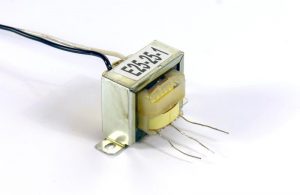Transformers play a crucial role in electrical power systems, facilitating the efficient transmission and distribution of electricity. When it comes to rating transformers, you may have noticed that they are typically rated in kilovolt-amperes (kVA) rather than kilowatts (kW). This distinction may seem puzzling at first, but there are valid reasons behind it. In this article, we will delve into the world of transformers and explore why they are rated in kVA and not kW.
Understanding Power and Apparent Power:
To comprehend the rationale behind transformer ratings, we must first grasp the concepts of power and apparent power. Power, measured in kilowatts (kW), represents the actual amount of work done or energy consumed by a device. On the other hand, apparent power, measured in kilovolt-amperes (kVA), represents the total power in an electrical circuit, considering both the real power (kW) and the reactive power (kVAR).
Reactive Power and Power Factor:
Reactive power arises from the interaction between inductive or capacitive elements in an electrical system. It does not perform useful work but is necessary for the operation of certain devices, such as motors and transformers. The ratio of real power to apparent power is known as the power factor. A power factor of 1 indicates a purely resistive load, while a power factor less than 1 indicates the presence of reactive power.
Transformer Operation and Power Factor:
Transformers, being electromagnetic devices, inherently exhibit inductive characteristics. As a result, they introduce reactive power into the electrical system. When designing and rating transformers, it is essential to consider the reactive power component. This is where the kVA rating comes into play.
Load Variation and kVA Rating:
Electrical loads can vary in terms of their power factor. Some loads may have a power factor close to 1, while others may have a lower power factor due to the presence of reactive elements. Transformers must be capable of handling these different load conditions. By rating transformers in kVA, their capacity to handle both real and reactive power is taken into account, ensuring optimal performance and efficiency across a range of load conditions.
Importance of kVA Rating in Transformer Sizing:
Properly sizing transformers is crucial to avoid overloading or underutilizing these vital components. By using the kVA rating, electrical engineers can accurately determine the appropriate transformer size based on the expected load characteristics. This ensures that the transformer can handle the real and reactive power demands of the connected loads, minimizing energy losses and maximizing system reliability.
Conclusion:
Transformers are rated in kVA rather than kW due to the need to account for reactive power and varying load conditions. The kVA rating allows for accurate sizing and optimal performance of transformers in electrical power systems. By understanding the distinction between real power and apparent power, as well as the importance of power factor, we can appreciate the significance of kVA ratings in transformer design and operation.




+ There are no comments
Add yours